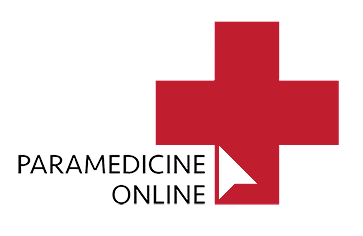Certificate III Non-Emergency Patient Transport unit overview
HLT31115 – Certificate III Non-Emergency Patient Transport unit overview
If this is your first time looking into working in patient transport, more than likely, you’ll be at the very first stages of your research. It may seem like an enormous task to get your head around what it is you need to learn in order to do the job well. Here at Paramedicine Online, our aim is to unravel the complicated process of understanding what this course is all about and for you to take away the knowledge look into this further.
It can be frustrating when trying to understand the complex world of adult education, especially when it seems so formal and just about everything you read seems to be written to confuse and leave you thinking, “what do they mean by that?”, or “I don’t understand what all this means”.
Simplicity is what we’re all about here at Paramedicine Online. With that in mind, let’s look at the individual topics you’ll be studying in the patient transport course. Although this training is designed to teach you way more than just patient transport.
As you continue with your training and development, you’ll be developing essential critical thinking and Emotional and Social intelligence skills. Every day you will be planning your work schedule, problem solving and thinking on your feet, because each day is different from the next. You’ll become more and more aware of how communication is used to influence positive outcomes and develop teamwork goals to meet your patient treatment goals. Health care is rapidly becoming more and more reliant of digital technology, information literacy and more importantly, adaptability. Studying online towards this qualification will also help you to organise your time, give you the tools to self-manage your thoughts, prioritise tasks and prepare to meet essential deadlines.
This course is more than a Certificate III – it’s going to change your life in so many positive ways.
Course design
This course was designed to deliver the essential knowledge and skills to become a Patient Transport Officer (PTO) in the health care sector. The qualification is divided into units of competency. Think of a ‘unit’ as a collection of tasks and activities you’ll perform in your role as a PTO.
For instance, let’s look at the unit of competency called Medical Terminology, a method to communicate effectively in the workplace. Medical terminology is a collection of abbreviated words to quickly describe a body part, the condition or status of a patient. In the fast-paced emergency care environment, communicating patient information quickly to other health care professionals is critical.
To make your job, and others who you work with easier, you must understand and respond to instructions using medical terminology. You’ll be carrying out workplace tasks and communicating (spoken and written) with and responding to instructions given by a diverse range of people who are performing a wide range of different job roles. On any given day you will be interacting with a lot of people, such as doctors, health care workers, Police, Nurses, office staff, hospital specialists etc; so you can see how important this knowledge is.
Tasks of a Patient Transport Officer (PTO)
As a PTO your working day will be varied and unpredictable, which is why so many people feel this job appeals to their desire to be in different locations and meeting new and interesting people every day. To make it a little easier to understand, we’ve divided the HLT31115 – Certificate III in Non-emergency Patient Transport units of competency into 5 separate areas. Each one represents an action step in the process of attending a routine call-out/job. Within each action step are the tasks a Patient Transport Officer would be expected to perform.
Arriving on scene – your responsibilities and tasks
- Comply with Infection Prevention and Control Policies and Procedures
- Manage a routine non-emergency scene
Patient interaction and communication
- Communicate and work in health or community services
- Work with diverse people
- Work legally and ethically
Patient assessment and care
- Recognise healthy body systems
- Provide First Aid
- Provide Advanced First Aid
- Provide Advanced Resuscitation and Oxygen Therapy
Patient movement and transportation
- Follow Safe Work Practices for Direct Client Care
- Follow procedures for routine safe removal of patient
- Transport non-emergency patients under operational conditions
- Interpret and apply medical terminology appropriately
Wrapping the tasks up into a typical call-out
Typically, you’ll be using medical terminology daily, giving and responding to instructions when carrying out tasks in the workplace and/or communicating with a wide range of internal/external clients and patients in a medical environment. You’ll also use your medical language skills and knowledge to communicate effectively with colleagues and staff, management, other industry providers such as Paramedics and Nurses and of course the patients and their family/carers.
In recent times, we have been alerted to seriousness of the COVID-19 Pandemic, meaning it’s critical you and anyone who assists you in the course of your work to follow procedures for infection prevention and control. You’re required to respond to infection risks in the workplace, as well as implementing and taking precautions to prevent the spread where you see the need to do so.
One of the most important things to remember is, as a PTO you will be working in the community and are required by law to follow and work within the legal and ethical frameworks that apply to your job role. Australia is a truly multicultural and diverse country and as such, you’ll understand the of importance of being respectful to people from different social and cultural groups, including Aboriginal and/or Torres Strait Islander people.
Patient care is always your top priority, your basic understanding of anatomy and physiology will help you to recognise and apply your clinical knowledge to make sure the patient in your care is never in any danger. Clinically, this is referred to as ‘maintaining healthy body functions’. As well as patient care, your responsibilities include managing a routine non-emergency (non life-threatening) situation to ensure the safety of yourself, patients, the general public, patient family members, others on your team, or those who may be in the vicinity of your work space.
Your skills also extend to ensuring safe patient removal under normal, routine conditions, as well as part of emergency work, where patients do not present with life threatening injury, illness or condition.
When working with others in a medical situation, you’ll be forever participating in safe work practices to ensure your own health and safety and that of the patient, as well as others who work in environments that involve caring directly for clients. Think of how you would be transporting a patient from an aged care facility to hospital for a check up. You would be connecting with workers from the aged care facility, possible family members and/or carers. When arriving at hospital, your focus is on patient safety as well as those workers who assist in patient handover.
Should your patient become unwell during transit or have suffered some form of injury or trauma, you’re well-trained to provide basic and advanced first aid until medical or other assistance arrives on scene. At times, you may attend an accident scene or mass gathering where many people could be affected, this is where you will use your incident scene management skills and be well-equipped to manage other first aiders on scene. During the course of administering treatment to a patient and in the event of cardiac arrest, you could be called upon to use specialised resuscitation equipment, in line with the Australian Resuscitation Council (ARC) guidelines.
A big part of your day working transporting patients to and from a facility means you must drive safely and responsibly and assist patients in and out of your vehicle safely. Taking care of your vehicle and internal equipment such as the two-way-radio, oxygen cylinders, medical supplies, plus diagnosing and remedying faults is also one of the responsibilities of a Patient Transport Officer.
Individual tasks of a Patient Transport Officer (PTO)
- Respond appropriately to instructions which contain medical terminology
- Carry out routine tasks
- Use appropriate medical terminology in oral and written communication
- Follow standard and additional precautions for infection prevention and control
- Identify infection hazards and assess risks
- Follow procedures for managing risks associated with specific hazards
- Work with information about the human body
- Recognise and promote ways to support healthy functioning of the body
- Assess non-emergency situation in relation to safe removal of the patient
- Implement procedures for safe removal of the patient
- Monitor removal procedure
- Communicate effectively with people
- Collaborate with colleagues
- Address constraints to communication
- Report problems to supervisor
- Complete workplace correspondence and documentation
- Contribute to continuous improvement
- Prepare and check vehicle and equipment
- Ensure faults in vehicle and equipment are remedied
- Convey and receive information using necessary modes of communication
- Load, unload and secure non-emergency patient and other specific personnel for transportation
- Drive vehicle
- Respond to an emergency situation
- Apply appropriate first aid procedures
- Communicate details of the incident
- Evaluate the incident and own performance
- Follow safe work practices for direct client care
- Follow safe work practices for manual handling
- Follow safe work practices for infection control
- Contribute to safe work practices in the workplace
- Reflect on own safe work practices
- Attend non-emergency scene
- Take appropriate measures to ensure safety at the scene
- Respond to an emergency situation
- Apply appropriate first aid procedures
- Coordinate first aid activities until arrival of medical assistance
- Communicate details of the incident
- Evaluate the incident and own performance
- Identify and respond to legal requirements
- Identify and meet ethical responsibilities
- Contribute to workplace improvements
- Reflect on own perspectives
- Appreciate diversity and inclusiveness, and their benefits
- Communicate with people from diverse backgrounds and situations
- Promote understanding across diverse groups
Units of competency
HLTINF001 – Comply with infection prevention and control policies and procedures
HLTAAP001 – Follow procedures for routine safe removal of patient
HLTAMB001 – Recognise healthy body systems
CHCCOM005 – Communicate and work in health or community services
HLTAMB014 – Transport Non-Emergency Patients under Operational Conditions
HLTAID003 – Provide First Aid
HLTWHS002 – Follow Safe Work Practices for Direct Client Care
HLTAMB011 – Manage a routine non-emergency scene
HLTAID006 – Provide Advanced First Aid
HLTAID007 – Provide Advanced Resuscitation
CHCLEG001 – Work legally and Ethically
CHCDIV001 – Work with diverse people

